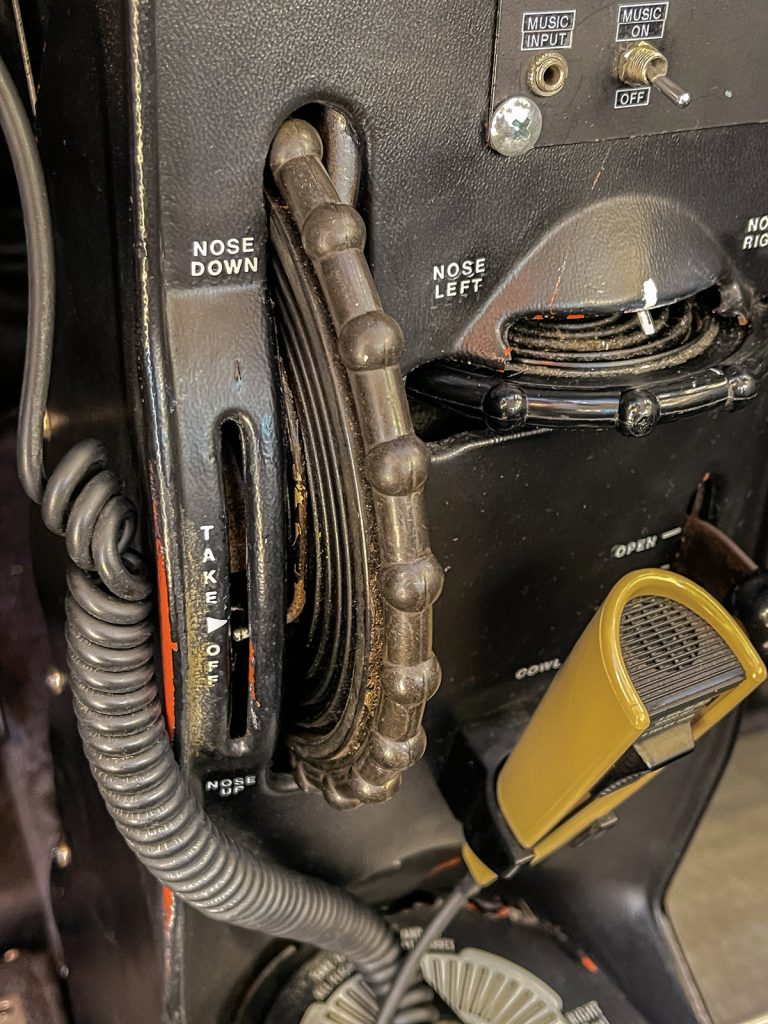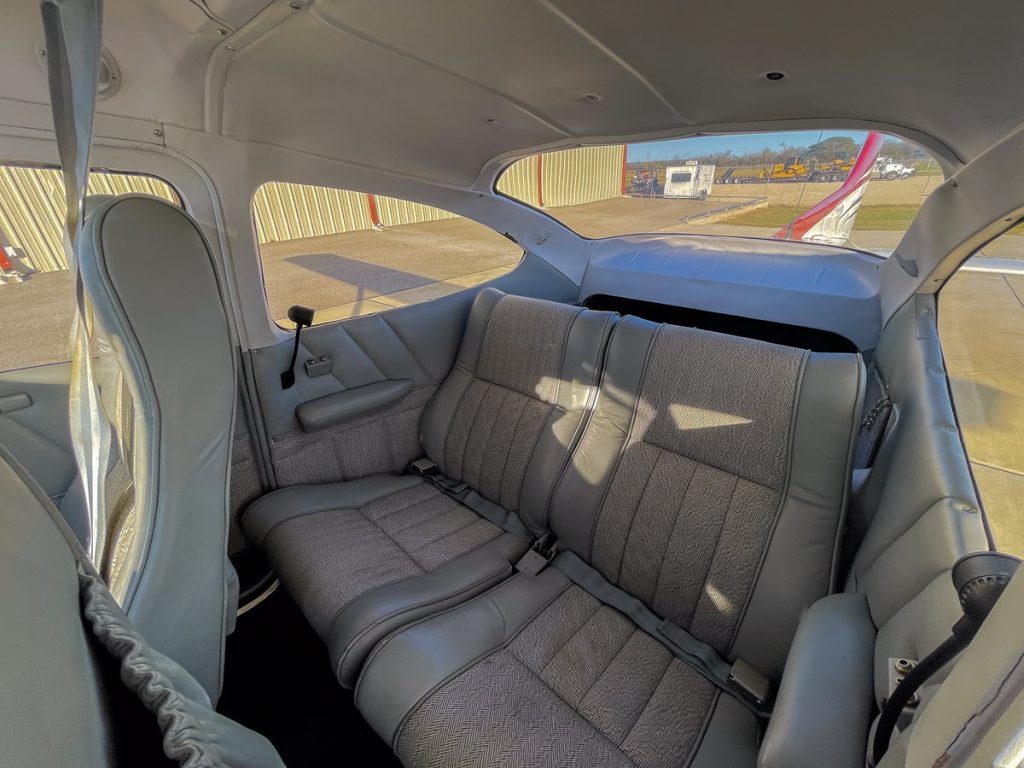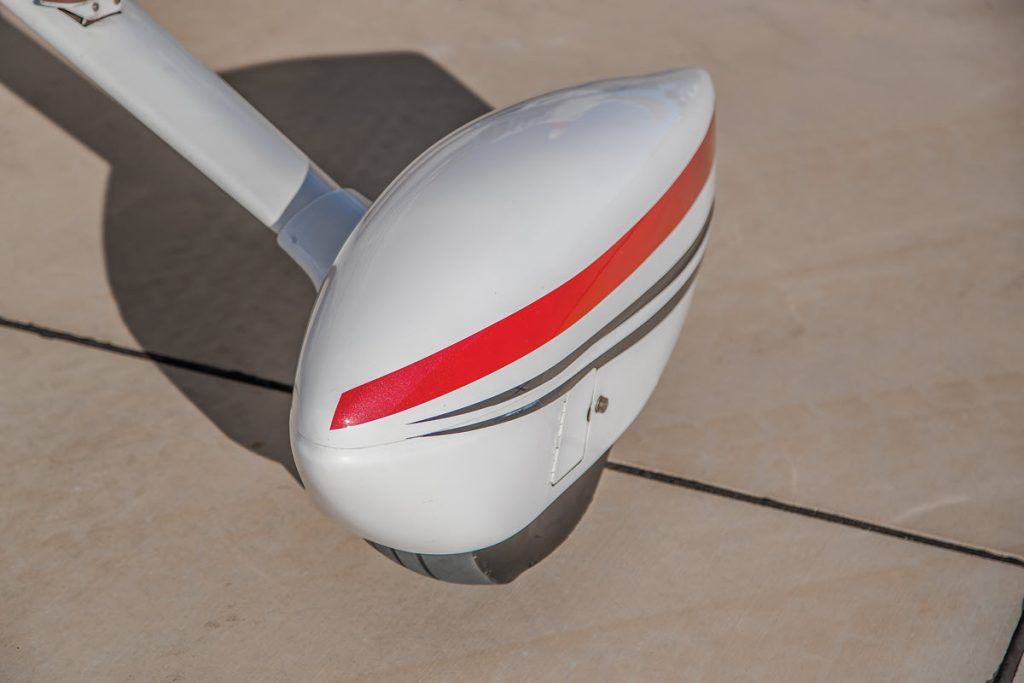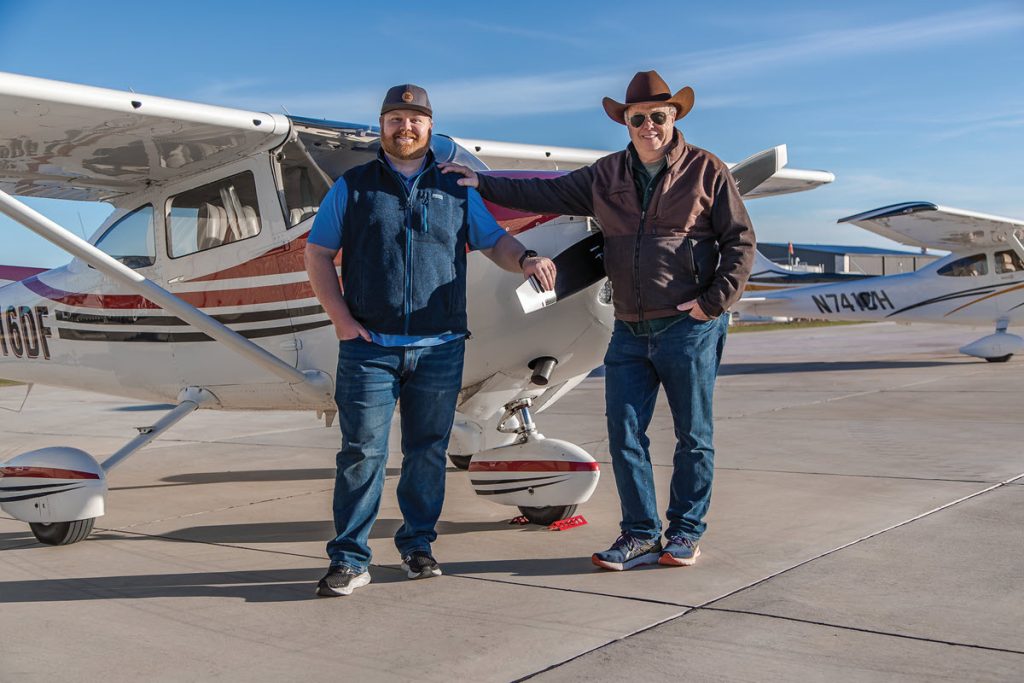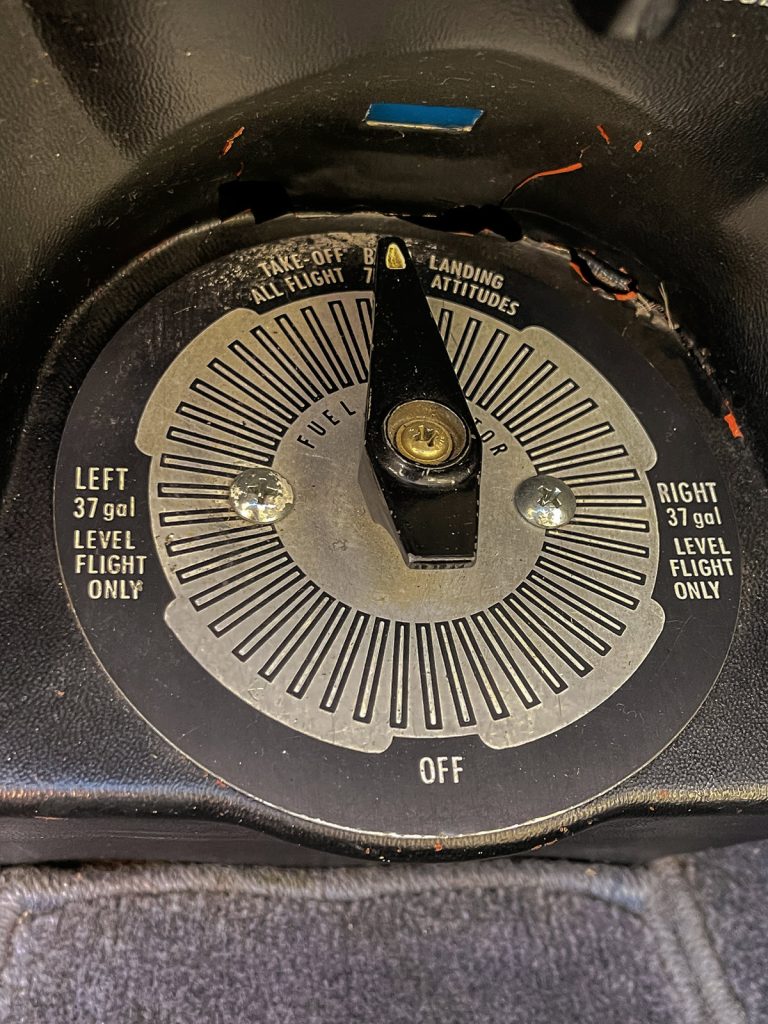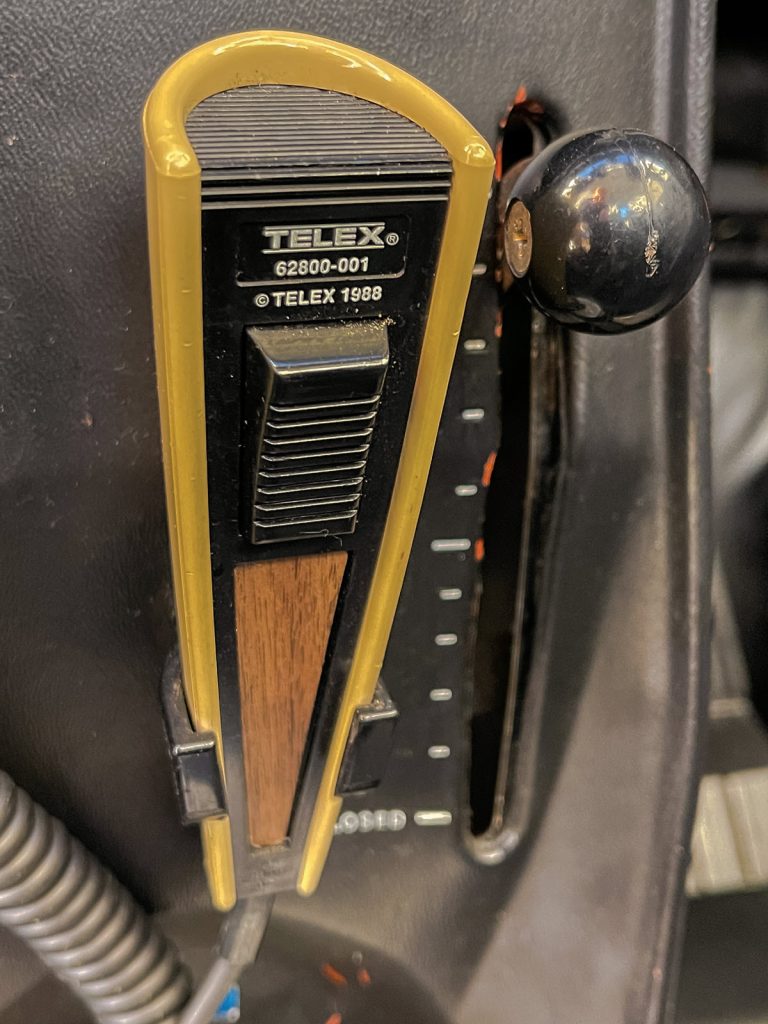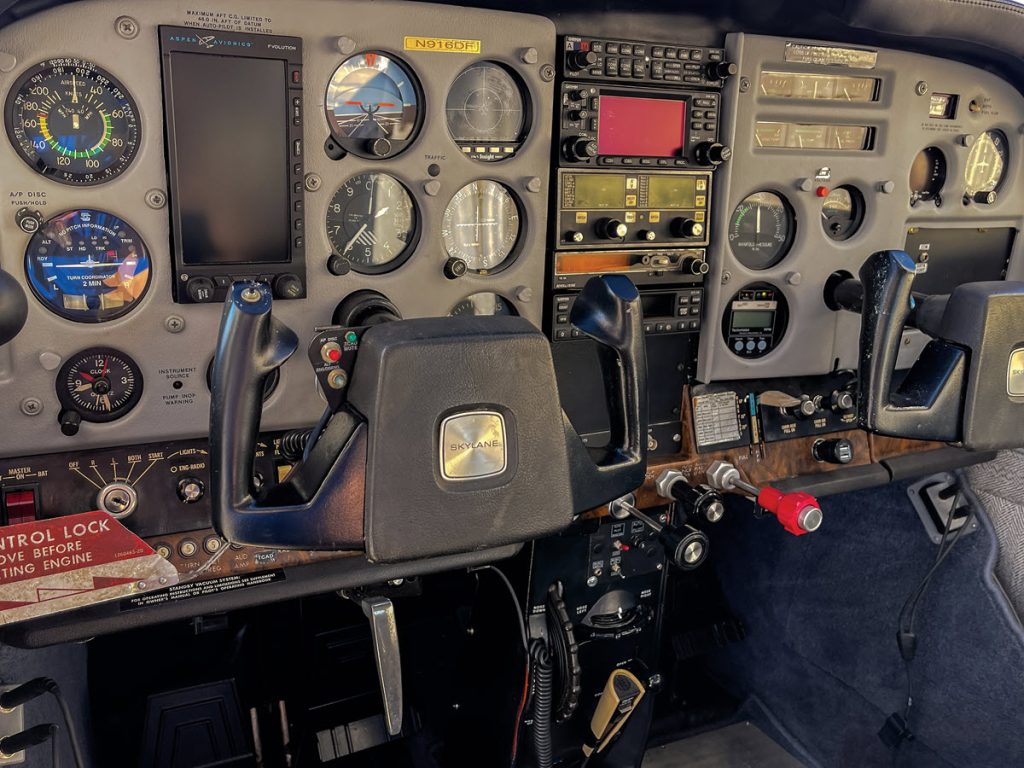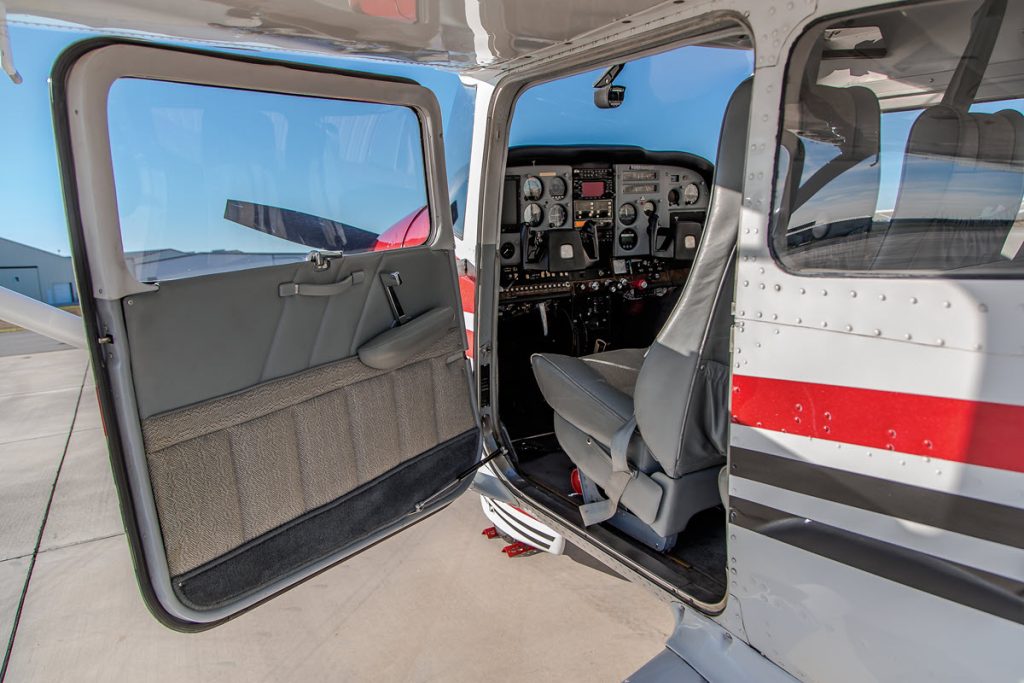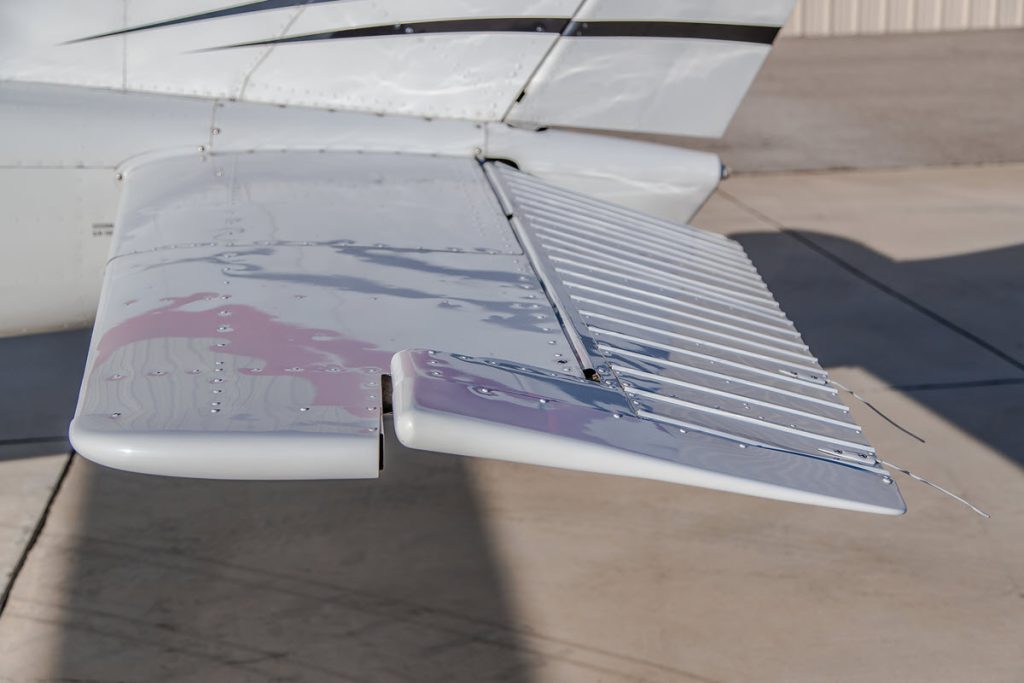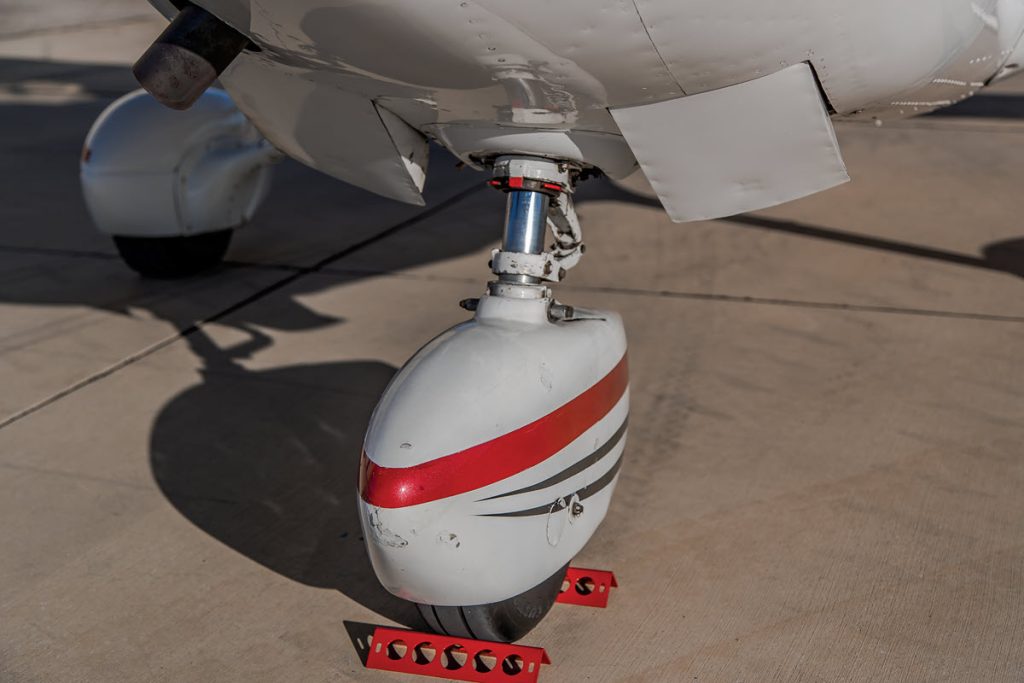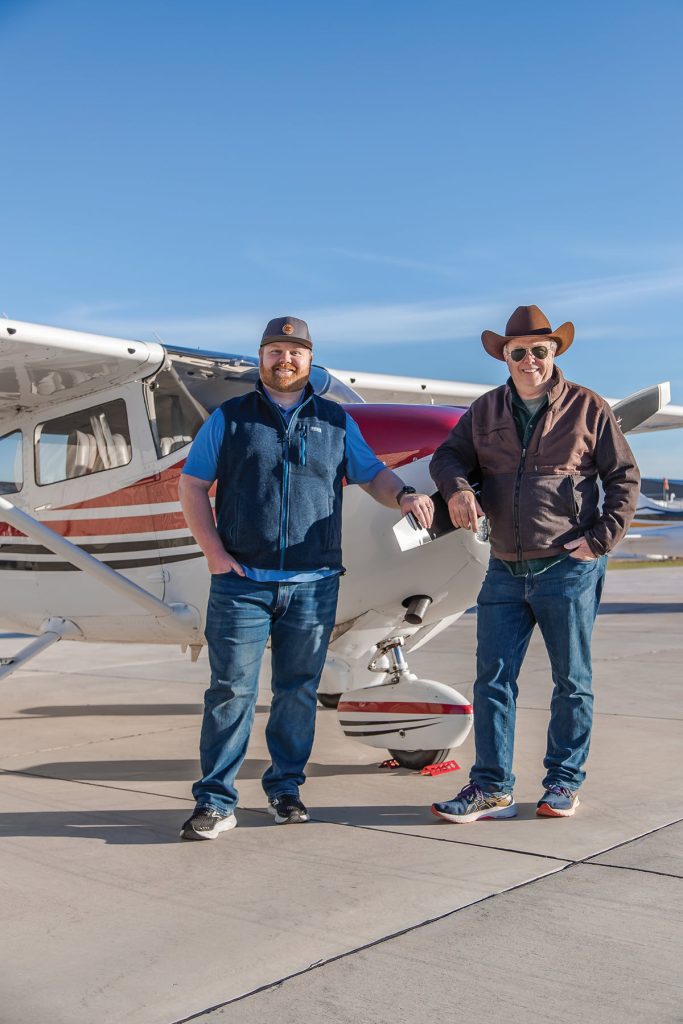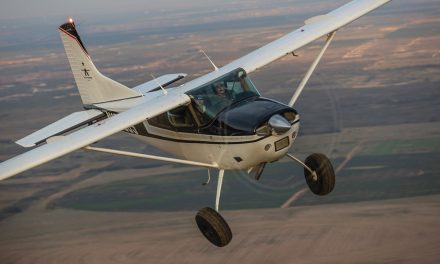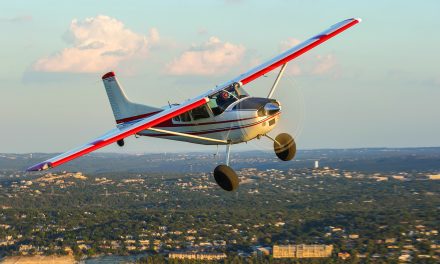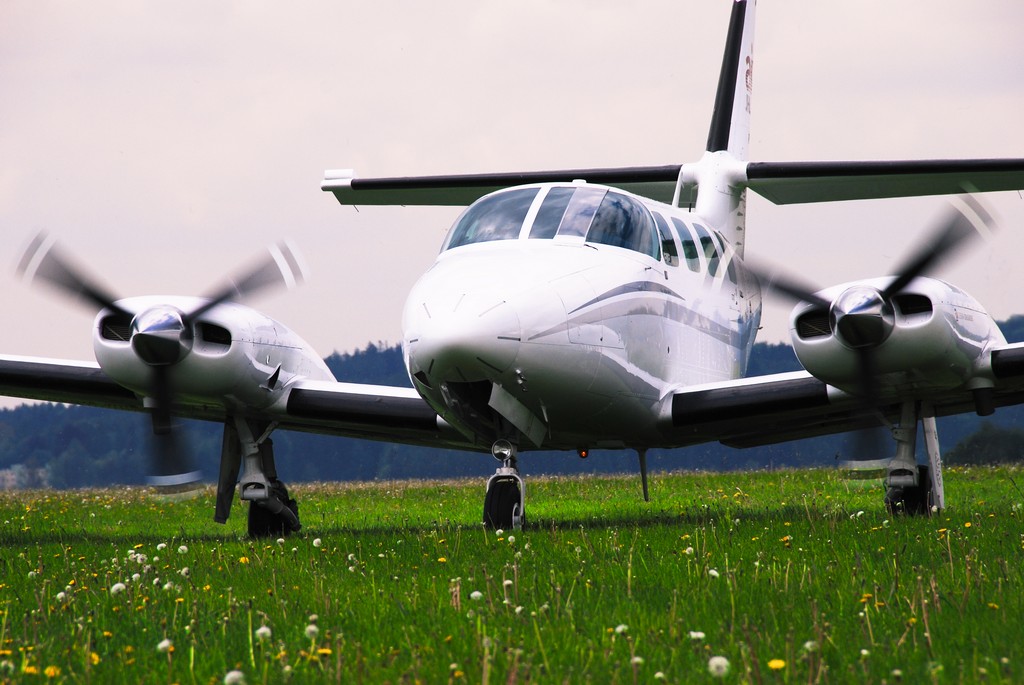And Why Charlie Thinks the Skylane is the Best All-Around GA Plane
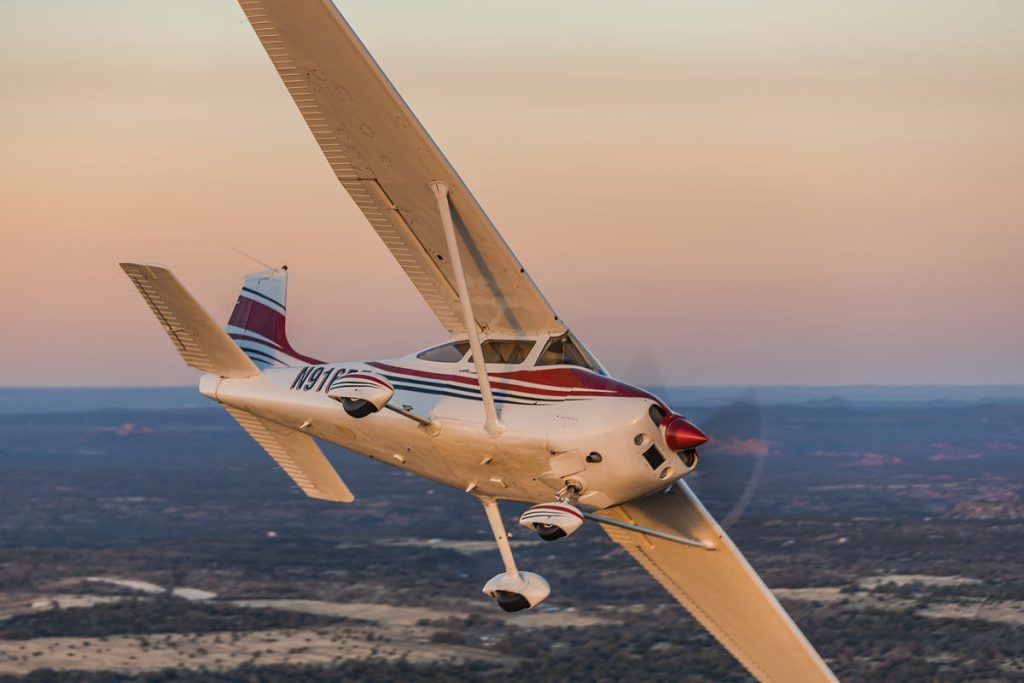
By Dan Brownell
Charlie Gasmire is a pilot and entrepreneur who founded Airplane Academy (airplaneacademy.com) in 2018 to bring more people into aviation and equip them for success. The website and its associated blog and YouTube channel provide education, resources, and guidance on becoming a pilot and purchasing an airplane.

Airplane Academy, An Aviation Education Destination
Airplane Academy has become a popular website, with more than 250,000 monthly views and 82,000 YouTube followers. In fact, it’s been so popular, Charlie has become somewhat of a celebrity and is often recognized at airports. But he’s adamant that becoming an internet star isn’t his goal. It’s to share his love of aviation and inspire the next generation of pilots.
“I want more people to become pilots and own their own plane, so a few years ago I just started sharing the things I’ve learned along the way and tried to encourage other people to take practical steps towards accomplishing those two things,” he said. “I didn’t start it to try to become someone or gain followers. I really just want more people to know that aviation is something you can pursue.
“My site is evolving but currently it’s mainly three things… a YouTube channel, a blog, and a step-by-step course on how to buy your first airplane.
The YouTube Channel
Airplane Academy’s YouTube channel covers everything from unique flying experiences to sharing lessons Charlie has learned from experience and what he wished he had known sooner. “I’m currently getting about 1,500 new YouTube subscribers per month. The only importance I really give that metric is that it tells me how much (or little) I’m helping people. If I’m producing content that people find more helpful or less helpful, it will show itself in the data. I can use that as a barometer to determine the content that’s resonating with the audience and tell me where I can help the most.
“The feedback I’ve been receiving has been very positive, and what people seem to really like is that I try to be honest about my mistakes and the things I struggle with as a pilot and aviation hobbyist. It’s easy to look at other people on YouTube and think they know everything, but that can have the opposite effect of the video’s intent. Instead of motivating the audience to dive into aviation, it can leave them discouraged, thinking they don’t have what it takes. In my videos, I try to share my struggles and things I’m learning to encourage others that they’re not alone.”
The Blog
Charlie’s blog (airplaneacademy.com/blog) covers aviation and training questions he was wondering about himself or that other people asked him in emails and YouTube comments. “If there was a good resource already out there, I’d send them there. If there wasn’t an easy-to-understand, yet detailed resource out there, I created it myself and put it on the blog. There are about 100 articles on there currently and I’ll be adding to that over time.
“A lot of my audience is on the newer side of their aviation journey, but I try to share lessons I’m learning that could be helpful to more experienced pilots, too,” Charlie said. “The blog in particular covers some more advanced topics as well. I have some accomplished pilots and engineers that contribute on the site, and they’re able to address topics they know more about than I do. There’s a lot of helpful info there.”
| Engine | Continental O-470-S |
| Horsepower | 230 |
| Top Speed | 170 mph (148 kts) |
| Cruise Speed | 135 mph (117 kts) |
| Fuel Capacity | 56 gal |
| Range | 910 miles (@ Economy Cruise) |
| Gross Weight | 2,950 lbs |
| Empty Weight | 1,655 lbs |
| Avg. Useful Load | 1,340 lbs |
| Takeoff Ground Roll | 705 feet |
| Takeoff Over 50 ft Obstacle | 1,350 feet |
| Landing Ground Roll | 590 feet |
| Landing Over 50 ft Obstacle | 1,350 feet |
| Rate of Climb | 890 fpm |
| Ceiling | 17,700 feet |
| Doors | 2 |
| Seats | 4 |
| Electrical | 14v |
| Dimensions (approx.) | |
| Cabin Width (at shoulder) | 42 inches |
| Length | 28 feet, 2 inches |
| Height | 9 feet, 1.5 Inches |
| Wingspan | 35 feet,10 inches |
These are the specs for a 1975 Cessna 182P. Every vintage airplane is now different; do not use these specs to plan a flight. All data taken from the Standard Catalog of Cessna Single-Engine Aircraft (JP
Media LLC).
The Airplane Buying System
The Airplane Buying System class is a 30-video course in which Charlie took months to document his airplane buying journey and interviewed flying mentors and industry experts (brokers, aviation accountants, insurance agents, etc.) to share their expertise as well.
Charlie’s Aviation Heritage
Charlie’s success with Airplane Academy has a lot to do with his family’s deep roots in aviation and being raised in that environment from birth. He realizes how special it is to have that background. “I feel fortunate to have grown up in an aviation family,” he said. “I grew up with aviation bedtime stories, playing flight simulator on the computer, and making any makeshift fort I could around the house into an imaginary cockpit. It wasn’t until seventh grade that I took my first small airplane ride, when my dad was getting back into active flying, and they let me ride along for a demo ride in a new Bonanza. I still vividly remember that.
“My grandfather was no longer flying once I was born, but he helped my dad experience and fall in love with aviation, which is the same thing my dad did for me. My parents were both very supportive of flying, and I started taking lessons when I was 14. I soloed a Cessna 172 on my 16th birthday, which fell on a Sunday. The next day I went and got my driver’s license. So I legally flew by myself before I legally drove by myself.”
Dad’s Influence
Charlie’s father, David Gasmire, is a successful healthcare executive and avid GA pilot who, from an early age, had wanted to become an airline pilot. Although that didn’t happen, David was able to make his mark in aviation. “I always dreamed of being an airline pilot since I began flying as a teenager. The bars on the shoulders from the left seat was a lifelong hope for me. However, the timing of flight school availability and airline hiring never lined up for me. Either the airlines weren’t hiring, or the flight schools were financially out of reach for me.”
But that didn’t stop David from achieving many other aviation accomplishments. In fact, he now has 4,000 hours with a private SEL and SE seaplane rating, a commercial ME instrument rating, and a single pilot type rating in Citation 525. He has owned 12 airplanes, including two Skylanes (normally aspirated and turbo), three Bonanzas (E35, A36, G36), a Cirrus SR22T, a Baron G58, a Piper Arrow (his first airplane, in which he learned a lot about how the airplane actually runs), a brief partnership in a Boeing Stear-man, a TBM 930, a Citation M2, and his Piper Super Cub, which he flew in formation with Charlie’s 182 for this issue’s cover photo shoot by Jack Fleetwood.
Although it’s pretty common for those who trained in a Cessna to stick with flying Cessnas, and those who trained in Pipers to stick with Pipers, David and Charlie’s family have flown such a broad variety of planes that they don’t limit themselves to a particular maker, and it doesn’t seem odd for them to be flying “rival” plane types.
David loves his 1970 Super Cub, which he has owned for 20 years. “I bought it in 2003,” David said. “It had been used as a towplane in Arizona but was wrecked when it went through a fence during towing operations.” The airplane was restored by Long’s Aircraft in Coleman, Texas, and David bought it shortly after that. “I have a picture of Charlie sitting on the wheel of the Cub when he was just a lad. It was my first tailwheel airplane, and I had about 2,000 hours at the time, mostly in Bonanzas and 182s.
“The Super Cub is simply a wonderful airplane. No gimmicks, just flies great, and is a blast to fly! It’s outstanding on grass, as most tailwheel planes are, but I think it’s easy to get very connected to the airplane’s flying characteristics. My wife won’t let me buy a motorcycle, so the Cub is my weekend motorcycle. It’s great for either a solo flight or with a rear passenger aboard. I fly a lot with local friends in formation trips around the Texas Hill country, East Texas to Reklaw, and up to Arkansas, where there are some fabulous grass strips to explore. The Super Cub is also easy to work on. You can get to things that need attention. I recently upgraded the panel, the landing gear and tires, and the prop, so she is now pretty beefy as a bush airplane.”
Off to a Flying Start
While Charlie is a relatively young pilot, he has racked up a wide variety of experiences in his 15 years of flying, largely due to his dad’s experience paving the way for him to get an early start and access a breadth of opportunities.
“Most of my 900 hours are in my 182, a Super Cub, or 172s, but a few of the more exotic hours in my logbook include getting my seaplane rating in Alaska in a Super Cub (the best 5.7 hours in my logbook), flying both the short and EX Caravan, a Varga, and a Great Lakes, flying aerobatics in a Citabria, and flying right seat with my dad when he owned his Citation M2. They’re all incredibly fun in their own way.
“A couple of years ago, I got to interview Tom Henricks, a decorated Air Force veteran and four-time astronaut, who was a two-time pilot and two-time commander of the Space Shuttle. I’ve since adopted his answer to the question, ‘What’s your favorite airplane you’ve ever flown?’ He said, ‘The next one I get to fly.’ I’ll never forget that answer, and it’s mine, too.”
The Cessna Experience
While Charlie has flown a number of planes other than Cessnas, he has found the Cessna line consistently pilot-friendly. “I’ve flown most of the existing fleet that Cessna currently offers, including the 172, 182, 206, both Caravans, and a Citation,” he said. “I can say from experience that they all fly extremely similarly to one another. Every airplane I left saying, ‘Flies like a bigger 172.’ I love that they’ve made a consistent flying experience across their entire line. I’ve found them really natural and easy to fly.”
Charlie’s Sensational Skylane
In 2016, Charlie purchased his first airplane, a 1975 Cessna 182P. That was a big step financially, but he considers it an essential investment in his aviation career. “Airplane ownership has taught me so much about aviation and has really brought to life some of the lessons in training that I had a hard time practically applying.”
Before he bought a plane, he thought long and hard about that decision and eventually settled on the Skylane. “I bought a 182 because I figured if it was the only airplane I ever owned, it could do a little bit of everything. And that turned out to be true. It’s not the airplane that’s the fastest, the biggest, the most fuel-efficient, has the shortest takeoff or landing, or the most useful load, but it is one of the only airplanes that has a respectable stat in all those areas. It doesn’t lead the pack in any of them, but it’s always in the conversation. It’s very easy to fly, affordable to insure, every mechanic can work on one, and parts are readily available. It’ll take you anywhere you want to go if you’re patient. It’s been the perfect airplane for my mission.”
“The only ‘con’ I can think of for the 182 is that it isn’t the leader in any of those areas — speed, useful load, short field, etc. So if you need a ton of useful load or a 180-knot airplane, it’s not your airplane. But for me, I’ve never had a mission that required that. And so that ‘con’ has never really impacted me until recently. Now that I have two kids, we’ll see how interested they become in aviation. If we’re routinely going places as a family in the airplane, I could see wanting a 206 one day, with more space and useful load.”

The Importance of Understanding How Your Plane Works
Knowing how the various systems in planes operate and interact and being able to interpret and respond to symptoms properly is an essential part of flying safely. “But this is an area of GA I think we’re really lacking in,” Charlie said. “On my YouTube channel, I’m pretty open about how many lessons I’ve learned way late in the game when it comes to maintenance. I shared a video on things that flight school didn’t teach you about your airplane, and all five of those things were things I learned the hard way once I became an airplane owner (cold starts, engine temps, leaning while taxiing, oil changes and analysis, and engine monitors).
“I didn’t grow up with any mechanical knowledge or experience, so I’ve been having to learn as I go. While I’ve learned an enormous amount in the last six-plus years owning an airplane, there’s still a ton I don’t know, and I want to get better. So as I learn more stuff and find more resources that are eye-opening to me, I’ve been sharing it on the YouTube channel because I know a lot of other people are in the same boat, too. We always feel like everyone else has it figured out and we don’t, but that just isn’t the case.”
David agreed wholeheartedly with Charlie. “I wish someone would have told me how important it is to have a good, basic understanding of airplane systems when I bought my first airplane, a 1968 Piper Cherokee 180-hp Arrow. We spend almost all our time learning how to fly the airplane and virtually no time understanding mechanically what keeps it in the air. Add to that the fact that most new pilots are renting airplanes, so they have no idea of the mechanical history of that particular airplane or where that specific airplane’s gremlins are, and you have the perfect recipe for a new pilot experience that they really didn’t have on their bucket list.
“I think every experienced pilot has at least a short list of examples they can attest became problems in the air. I learned about a runaway trim after takeoff in a Bonanza and about the electrical system of a 1954 Bonanza, resulting in pumping the gear down and landing at a private strip with the cylinder head temps in the red. I’ve learned about how fuel bladders can fail at 7,000 feet over the Colorado desert, and I’ve learned the value of a thorough preflight by seeing an engine cowling come partially unlatched during flight.
“I’ve also learned about what happens when the engine begins to quit in flight. The key is to understand how an emerging event can happen in the first place. Understanding the mechanics so you can understand the symptoms better is huge. Without knowing how the engine and all the related systems work, it would be hard to understand the significance of what is occurring. Low oil pressure for example — what it means, how it can happen, and what you should do about it all while still aviating, navigating, and communicating.
“Over the years, the amount of information for situational awareness has greatly improved, but that’s no substitute for safely flying the airplane. I have pilot friends who are also their own mechanics. They’re great guys to fly with because they’re great resources to help solve problems. But I think all of us have the responsibility to thoroughly understand what keeps the motor turning and the airplane flying. Smart people like solving problems, and even smarter people like knowing how to prevent those problems in the first place.”
Conclusion
Charlie Gasmire and his Airplane Academy are creating an effective bridge to help introduce the general public to the exciting world of aviation. And as he travels around the country in his 182, he’s making a solid case for why the Skylane is one of the best choices in the general aviation world for the up-and-coming aviator.
Select a photo to open a pop-up slideshow
